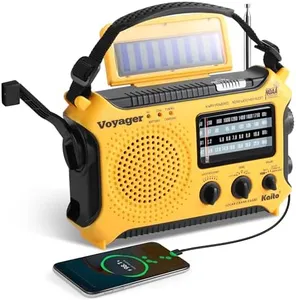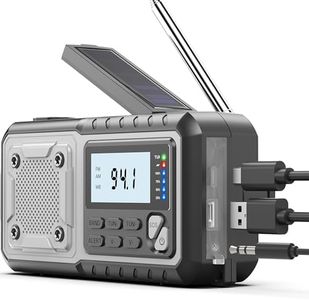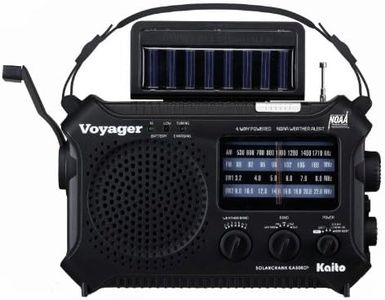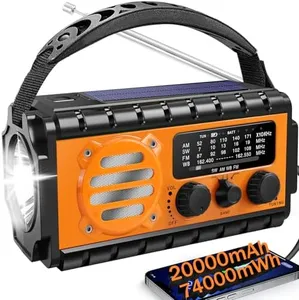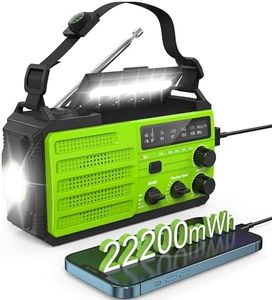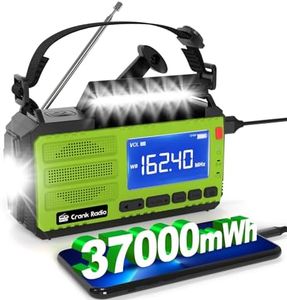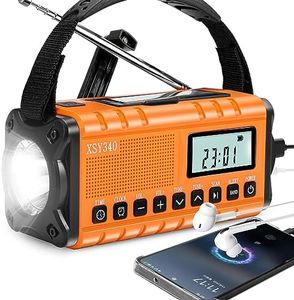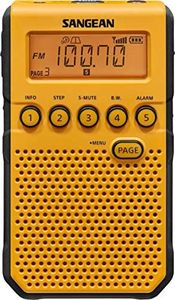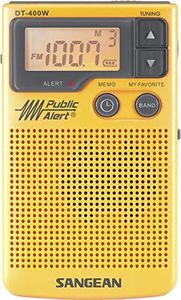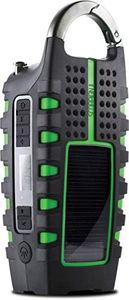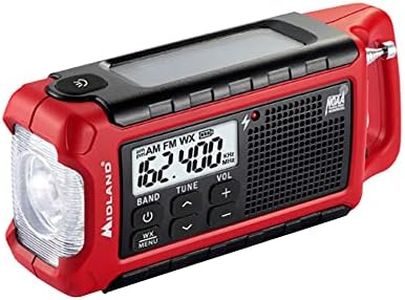We Use CookiesWe use cookies to enhance the security, performance,
functionality and for analytical and promotional activities. By continuing to browse this site you
are agreeing to our privacy policy
10 Best Weather Alert Radios
From leading brands and best sellers available on the web.Buying Guide for the Best Weather Alert Radios
Choosing a weather-alert radio is a smart way to stay updated and safe during storms, emergencies, and natural disasters. These radios are designed to automatically notify you about severe weather conditions and other local alerts. When shopping for one, focus on understanding the key features that determine how reliably and conveniently the radio can deliver critical information, even during power outages or when you’re away from home.Alert Type and SAME TechnologyAlert type refers to how the radio notifies you about a weather event. Many radios have a loud siren or alert tone, lights, and sometimes voice messages. SAME (Specific Area Message Encoding) technology lets you program the radio to receive alerts only for specific counties or areas, which is important for avoiding false alarms about events far from your location. If you want relevant, location-specific alerts, try to choose a model with SAME technology. If you're traveling or want a more general alert system, a basic model without SAME is easier to set up.
Power SourcePower source describes how the radio stays running, especially during emergencies. Most radios use batteries, wall outlets, and sometimes hand cranks or solar panels for backup. If you expect to use the radio at home most of the time, plugging it in is convenient, but if you might lose power or use the radio outdoors, look for one with multiple power options. Hand cranks and solar charging are useful for extended power outages.
Reception and Channel CoverageReception and channel coverage indicate what weather information the radio can access. Good radios receive all NOAA (National Oceanic and Atmospheric Administration) weather radio stations, possibly along with AM/FM stations for broader information. If you live in a remote or hilly area, pick a radio known for strong reception, and check that it supports all seven NOAA channels for reliable alerts.
Portability and SizePortability and size matter depending on where and how you'll use the radio. Smaller, lighter radios are easy to carry while camping, hiking, or traveling, but may have fewer features or shorter battery life. Bigger tabletop models suit home use better, often with larger displays and louder speakers. Consider how often you'll move the radio and whether you'll want to pack it in a bag or leave it in a fixed spot.
Extra FeaturesExtra features can include things like built-in flashlights, USB phone charging, alarm clocks, or even two-way communication. These can add convenience during emergencies or power outages. If you want your radio to double as an emergency light or phone charger, look for those options. If you prefer simplicity, focus on alerting features.
Display and ControlsDisplay and controls refer to how the radio shows information and how easily you can set it up. Clear, backlit displays are helpful for reading alerts in low light, and intuitive buttons make programming easier, especially under stress during severe weather. If you have trouble with small screens or complex menus, look for a model with larger displays and easy-to-use buttons.

